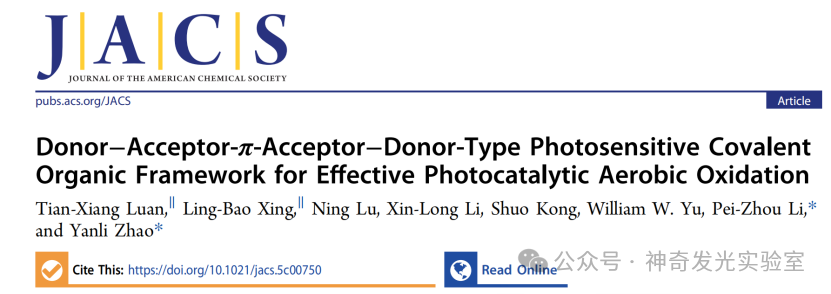
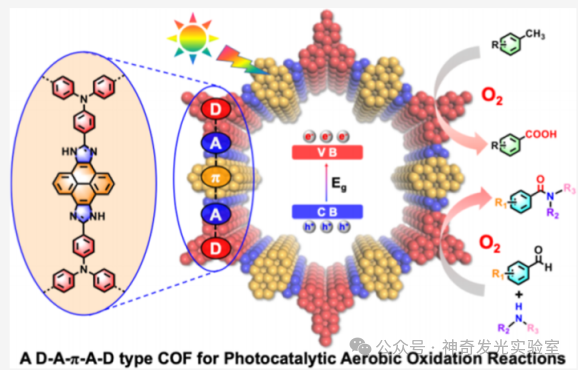
Oxidation reactions are a fundamental type of reaction in chemical synthesis and material preparation. The visible light-driven photocatalytic aerobic oxidation, which directly and efficiently converts solar energy into chemical energy through photocatalysts under mild conditions, has become one of the most promising oxidation technologies due to its sustainability advantages. Therefore, photocatalytic aerobic oxidation is widely applied in chemical synthesis, environmental antibacterial disinfection, and photodynamic therapy. Essentially, the core of this advanced green process lies in the rearrangement of the electronic cloud on the surface of the photocatalyst under light excitation: electrons transition from the valence band (VB) to the conduction band (CB); subsequently, the photogenerated electrons and holes migrate to the catalyst surface, where they undergo redox reactions with reactants such as oxygen, generating reactive oxygen species (ROS), facilitating oxidation reactions that are difficult to achieve by conventional methods. Therefore, developing efficient and stable semiconductor photocatalysts is crucial for the research of photocatalytic aerobic oxidation. Typically, in addition to enhancing light capture ability by introducing chromophores, the synergistic integration of multiple functions can improve charge separation and migration efficiency, thereby constructing high-performance photocatalysts.
Covalent Organic Frameworks (COFs) have shown broad application prospects in the field of photocatalysis as a new type of functional framework material. These crystalline porous materials are constructed by periodically covalently bonding pre-designed symmetric organic modules, possessing tunable structural diversity and chemical modifiability. Studies have found that introducing photochromic units into photocatalytic systems can significantly enhance light capture ability, while the “push-pull” electronic effect of the donor-acceptor (D-A) structure and the synergistic effect of π-conjugated groups can effectively promote charge separation and migration while suppressing electron-hole recombination. Therefore, embedding chromophores into π-conjugated structures with D-A characteristics has been confirmed as a reliable pathway for constructing efficient photocatalytic COFs. Although various photochromic COFs containing D-A units have been developed for photocatalytic reactions, there remains a significant challenge in constructing multifunctional materials that perform excellently in multiple photocatalytic aerobic oxidation systems.
While traditional D-A or D-π-A type materials have been extensively studied in photocatalysis by enhancing charge separation and transfer capabilities, there are few reports on constructing unique D-A-π-A-D structures by connecting two D-A units with π-conjugated groups. This study successfully constructed a COF material with a regular D-A-π-A-D structure, named PyNTB-COF, by in situ connecting triphenylamine-based photochromic units with pyrene units through imidazole groups. After confirming its crystalline framework, high porosity, and stability through structural characterization, the photoelectric properties and theoretical calculations demonstrated that this material possesses semiconductor characteristics, excellent light responsiveness, and charge separation and migration capabilities. Electron paramagnetic resonance (EPR) experiments indicated that PyNTB-COF can efficiently trigger the generation of ·O2– under visible light. Ultimately, photocatalytic reactions such as the oxidation of toluene to benzoic acid/benzaldehyde and C–N cross-coupling of tetrahydropyrrole verified the high efficiency of this material in practical applications. This study demonstrates that inserting π-conjugated groups between two D-A units to form a D-A-π-A-D structure can significantly enhance photocatalytic charge separation and migration efficiency, providing a new strategy for constructing highly active photocatalysts for aerobic oxidation.
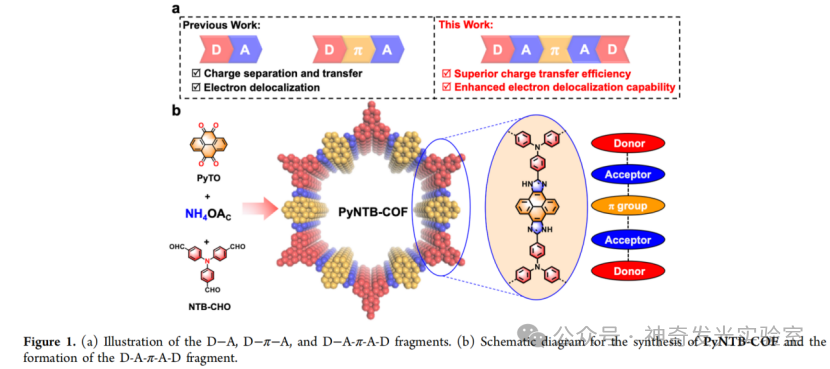
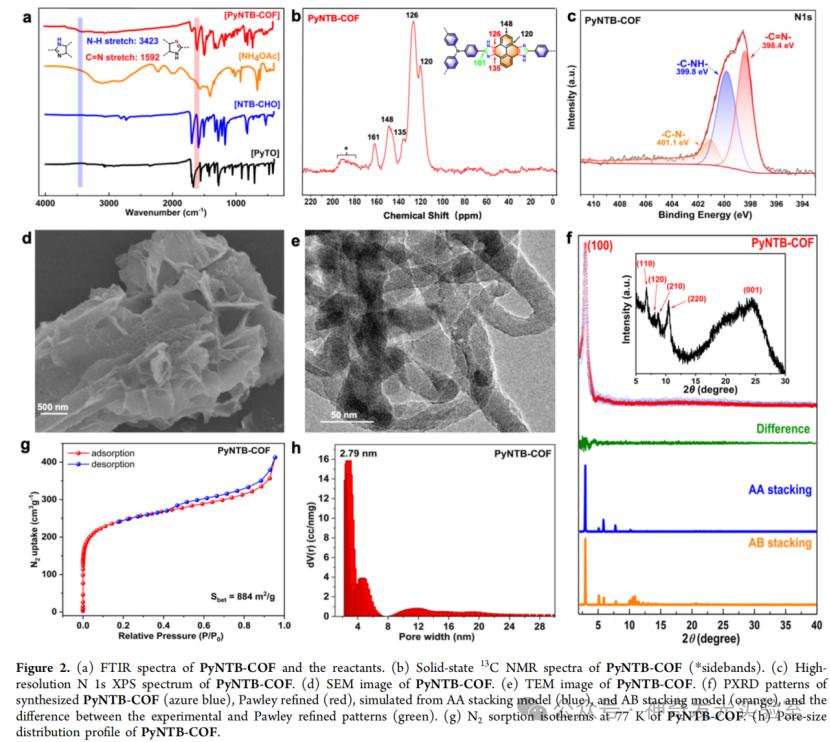
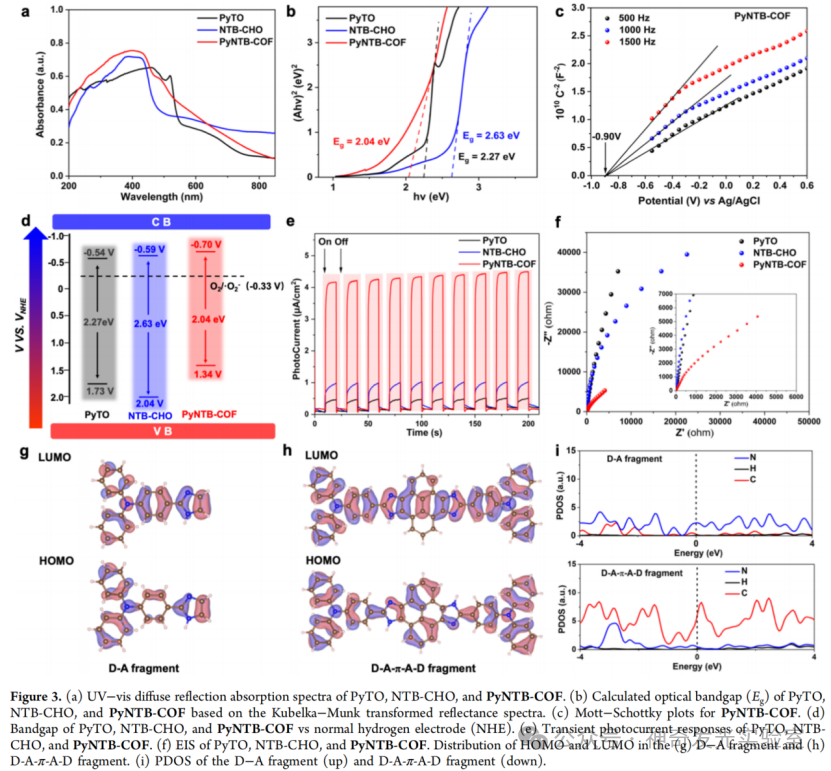
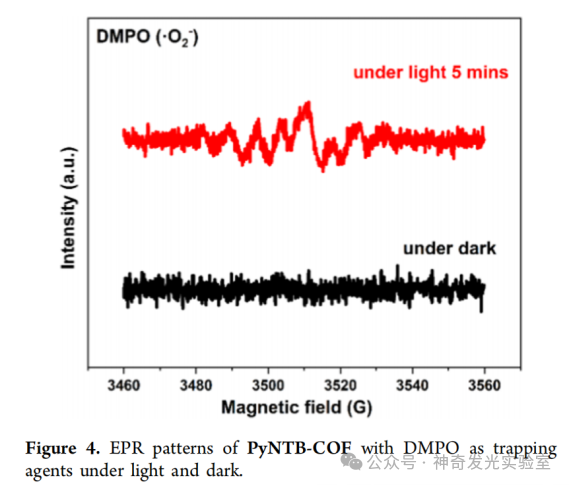
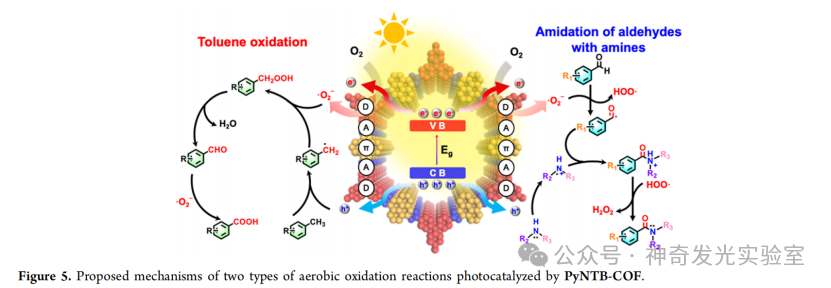
[Reference Details]Tian-Xiang Luan, Ling-Bao Xing, Ning Lu, Xin-Long Li, Shuo Kong, William W. Yu, Pei-Zhou Li, and Yanli Zhao. Donor−Acceptor-π-Acceptor−Donor-Type Photosensitive Covalent Organic Framework for Effective Photocatalytic Aerobic Oxidation. J. Am. Chem. Soc., 2025, https://doi.org/10.1021/jacs.5c00750